Updated on July 27, 2016
User-centred design can be a driver in organizations: SoundCloud report
My purpose is to explore the opportunity to embed the Human-Centred-Design methodologies in business models culture. The report below suggests to equip the organizations with the understanding of customer needs as a real competitive advantage. Deloitte just released the 2016 Global Human Capital Trends report “The new organization: Different by design”.
User Experience (UX) methods were developed largely to evaluate product usability and are primarily applied to web usability contexts. Other methods, such as co-design and human centered design, also provide approaches to facilitate a better understanding of the user.
Challenge & Objective
I carried out User Research Interviews with five users in two scenarios in London, house party and coffee shops. The interview insights helped me to forecast potential pivots in the final recommendations.
The report is focused on the SoundCloud Android app to identify three usability issues through the User Experience.
![]() Joanna, 25 yrs old from Brazil, Pret-a-Manger Assistant
Joanna, 25 yrs old from Brazil, Pret-a-Manger Assistant
![]() Chris, 22 yrs old from Manchester, student
Chris, 22 yrs old from Manchester, student
![]() Colin, 34 yrs old from London, independent musician
Colin, 34 yrs old from London, independent musician
![]() Matthew, 31 yrs old from Glasgow, Web Developer, DJ
Matthew, 31 yrs old from Glasgow, Web Developer, DJ
![]() Andrea, 28 yrs old from Italy, Independent Musician
Andrea, 28 yrs old from Italy, Independent Musician
Service Innovation
In the Digital Music Industry companies need to decide which tech trends to invest in to fulfil the user satisfaction. In the last two decades the MP3 and iTunes buried the CD, then online streaming is killing MP3 and iTunes, and now the Vinyl is showing a modest comeback.
What’s next…?
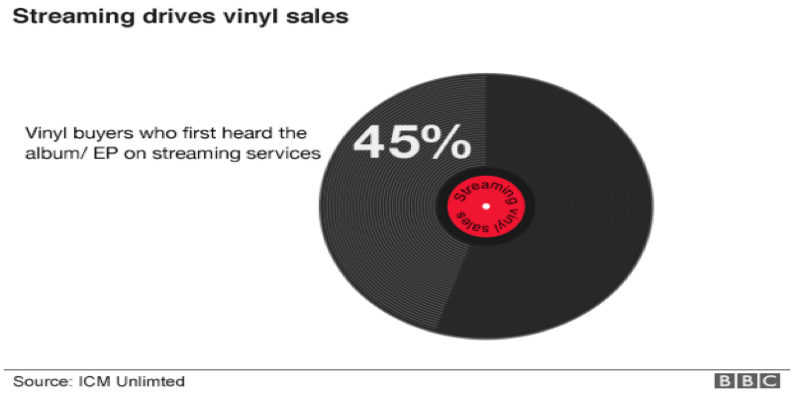
http://www.bbc.co.uk/news/entertainment-arts-36027867
According to an ICM poll, half of consumers tend to listen to an album online before purchasing a vinyl copy. This behaviour sees involved SoundCloud or YouTube users, highlighting that free music can generate a substantial profit.
For users the value of a service is the integration of their interactions and experience. Embracing the socio-cultural approach, we seek to learn what an individual does, feels, knows and says. Service Innovation involves changing practices, resulting in different experiences for users in which they change behaviours and perceptions. Also, think of the importance of serendipity as a mixture of observation and curiosity that allows us to learn from the unexpected: habits, stories, and meaning in the user experience. In the face of the consumer ‘weirdness’, Service Innovation can provide a holistic picture of what’s needed in designing a service experience.
How can we look at pains and gains for the usability issues?
I applied a Value Proposition Canvas split in two maps. Firstly, the Customer Profile clarifies your customer understanding. Secondly, the Value Map describes how you aim to create value for that customer. Finally, you achieve Fit between the two when one meets the other.
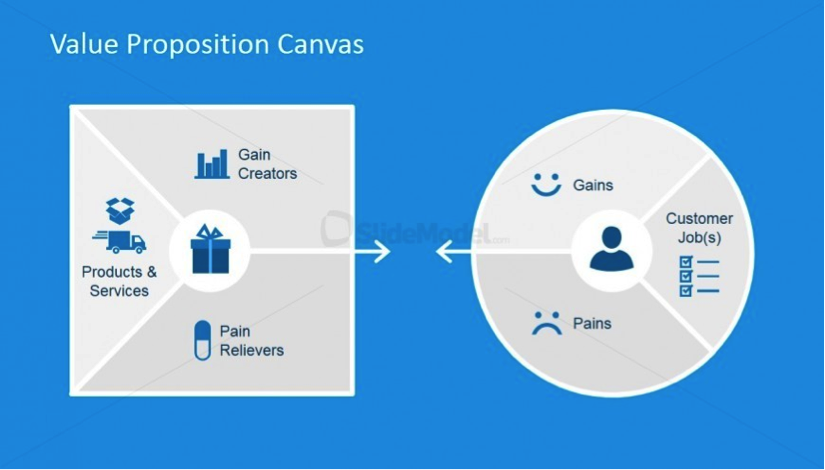
https://strategyzer.com/books/value-proposition-design
During the interviews, I used the Design Thinking toolkit in the discovery phase: observation, ethnography, empathy and listening. My aim was to unearth feelings and struggles in order to map extreme pains and essential gains.
Afterwards I started the Journey to step into the customer’s shoes:
 Customer Profile
Customer Profile
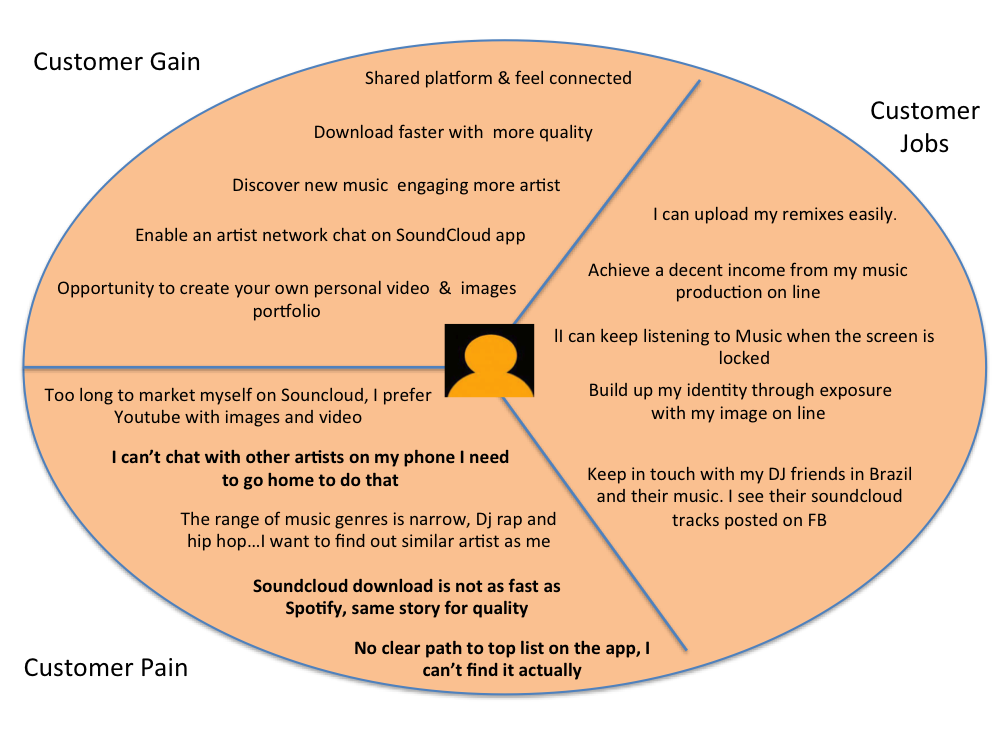
The Customer profile above depicts the discovery phase where I conducted interviews with five users. By listening and observing the users in their surroundings, my aim was to understand through open questions in three areas with empathy.
The customer jobs are how the users try to perform their tasks, the need they are trying to satisfy. The customer pains are anything that hinders the user before, during and after trying to get the job done. The customer gains are about how much the users would expect or dream a better performance as a desired gain.
I identified the following three SoundCloud usability issues according to what might leverage the users experience in the Android app:
1 – The barrier to communicate between users through messenger on the phone
2 – Lack of top sound quality along with a faster downloading
3 – No clear path to top lists on the app
Value Map
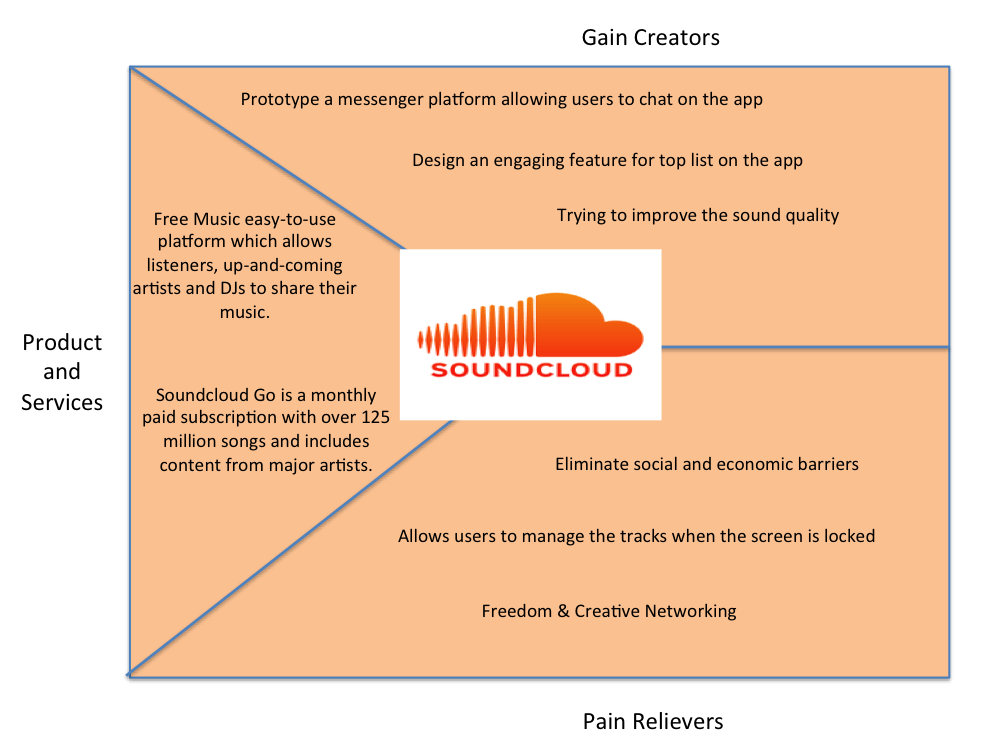
In the second map of the Value Proposition Design (above) I outlined what SoundCloud currently offers as Product and Services.
The Pain Relievers describe how SoundCloud alleviates specific customer pains, trying to remove obstacles that annoy the users before, during or after their tasks.
The Gain Creators are potential pathways to address the users’ expectations, desires or how including functional utility, social gains, and positive emotions would surprise them. Therefore, as result of this journey, in order to address the three usability issues identified, the three gains creators for the Android app would be:
1 – A messenger platform to allow users to chat to each other
2- A user friendly feature for a clear path to top lists
3 – Improvements in sound quality and downloading speed
Final Recommendations
The three identified issues require a further analysis. The following final recommendations are to expand my initial research for this complex business scenario and to complete the Value Proposition Design into Beta testing.
The first recommendation I suggest is to create the SoundCloud Brand Persona as result of motivations, attitudes, and behaviours among diverse users. Storytelling plays an important role to frame the challenge in human terms. A compelling story will bond the customers on an emotional level. The brand persona should serve as ‘Rosetta stone’ for the innovation process.
Secondly, it could be helpful to look at big data to try to apply a deep thinking on what really matters to the music users. Observe the users in the core of their activities to develop insights based on their known and unknown needs and wants. It is an approach that entails more watching than talking in order to understand where do they come from, how often, how long, where do they go, why. This is also known as PEST Analysis.
Finally, I recommend the Human-Centered Design approach (illustrated below) as a set of intuitive principles able to unlock potential solutions. Through a deep understanding of the user emotions, needs and feelings the Human-Centered Design approach shapes the value proposition design with prototyping possibilities. This methodology is an iterative process of investigating the users in their natural surroundings, turning barriers and obstacles into new opportunities.
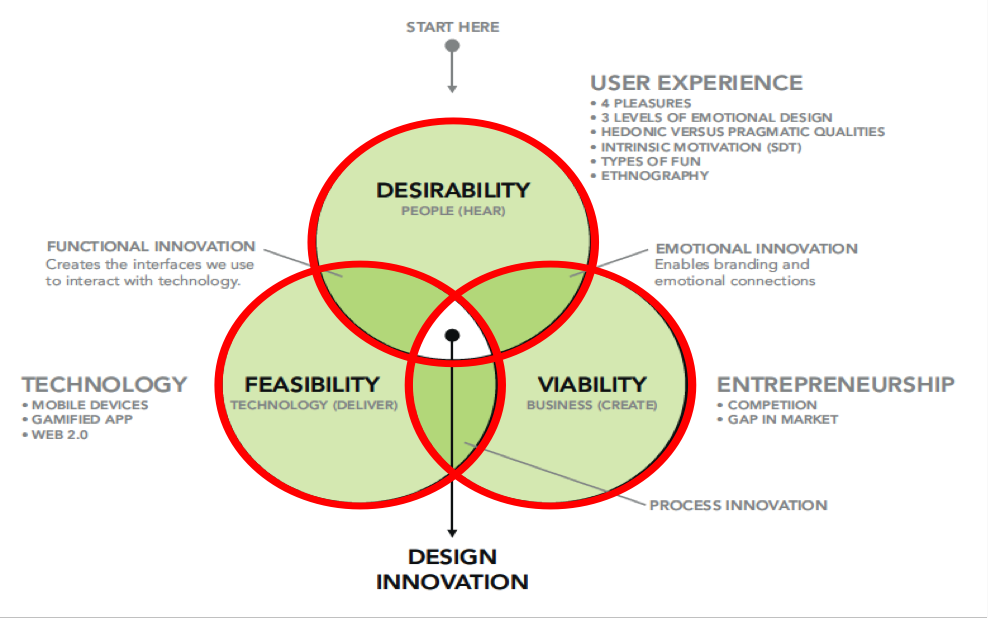 An intersection of hard data, customer centricity and human-centred design can provide a sustainable competitive advantage: eliminate customer pain, elevate customer service and create a personalized customer experience.
An intersection of hard data, customer centricity and human-centred design can provide a sustainable competitive advantage: eliminate customer pain, elevate customer service and create a personalized customer experience.

